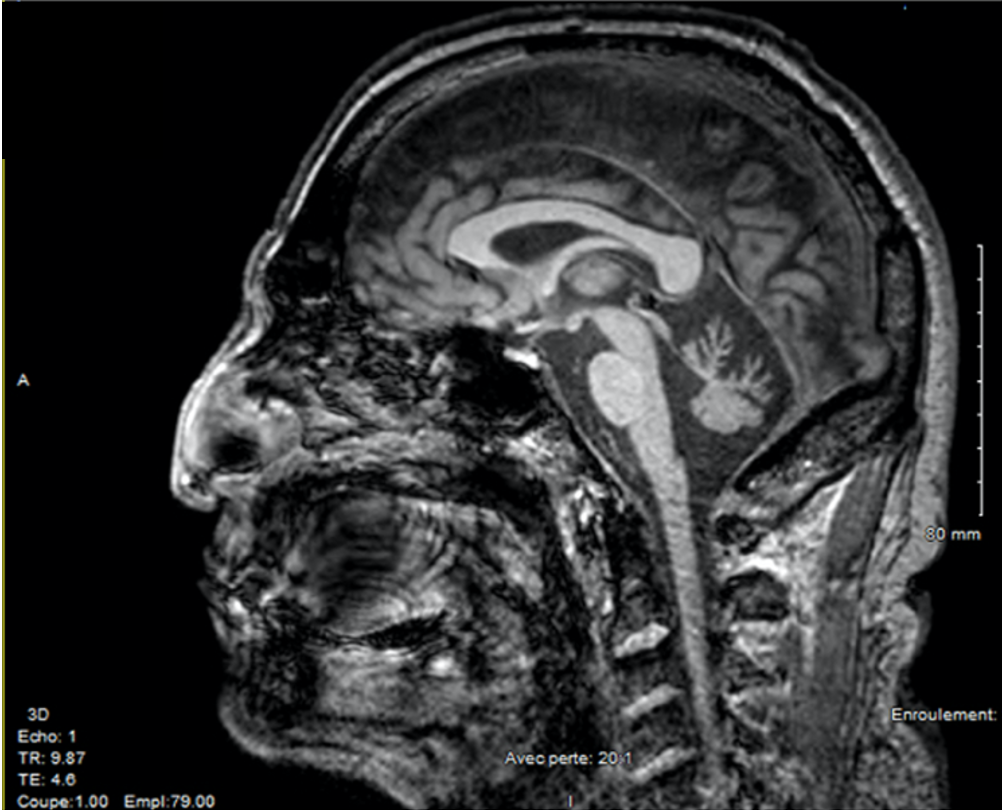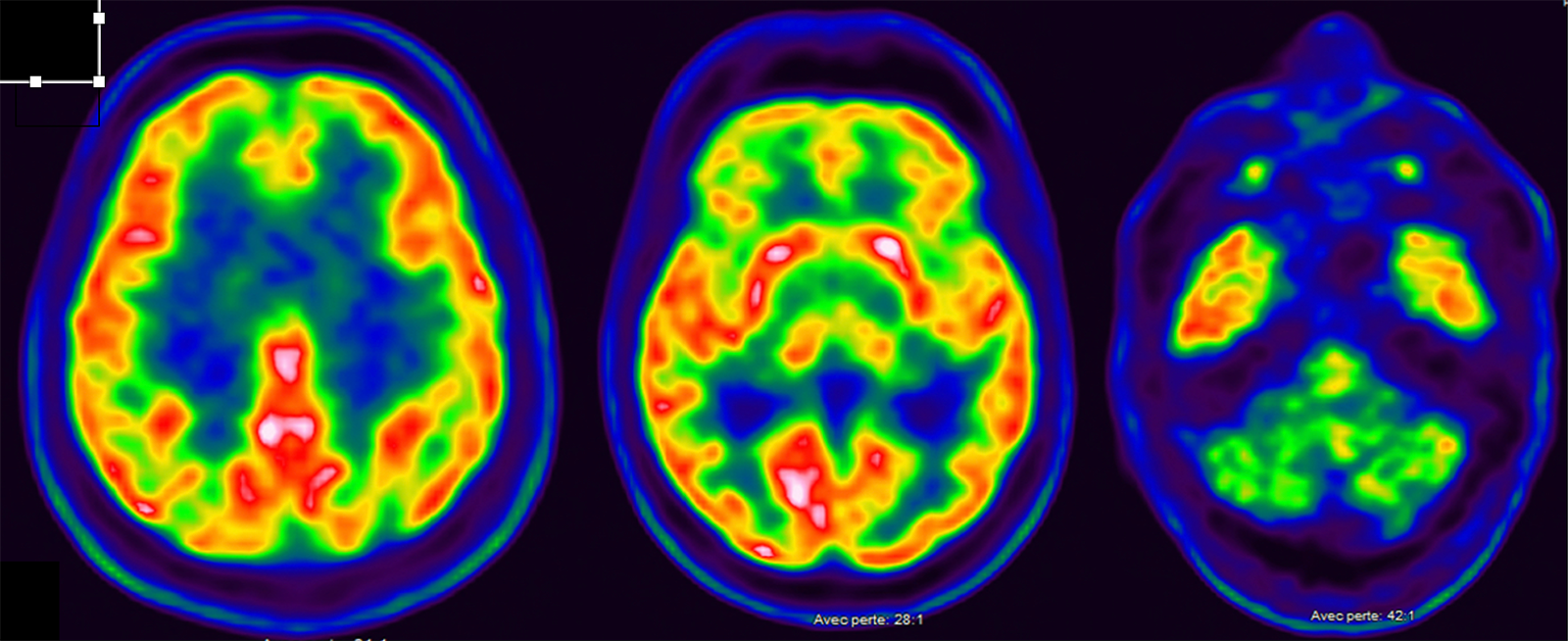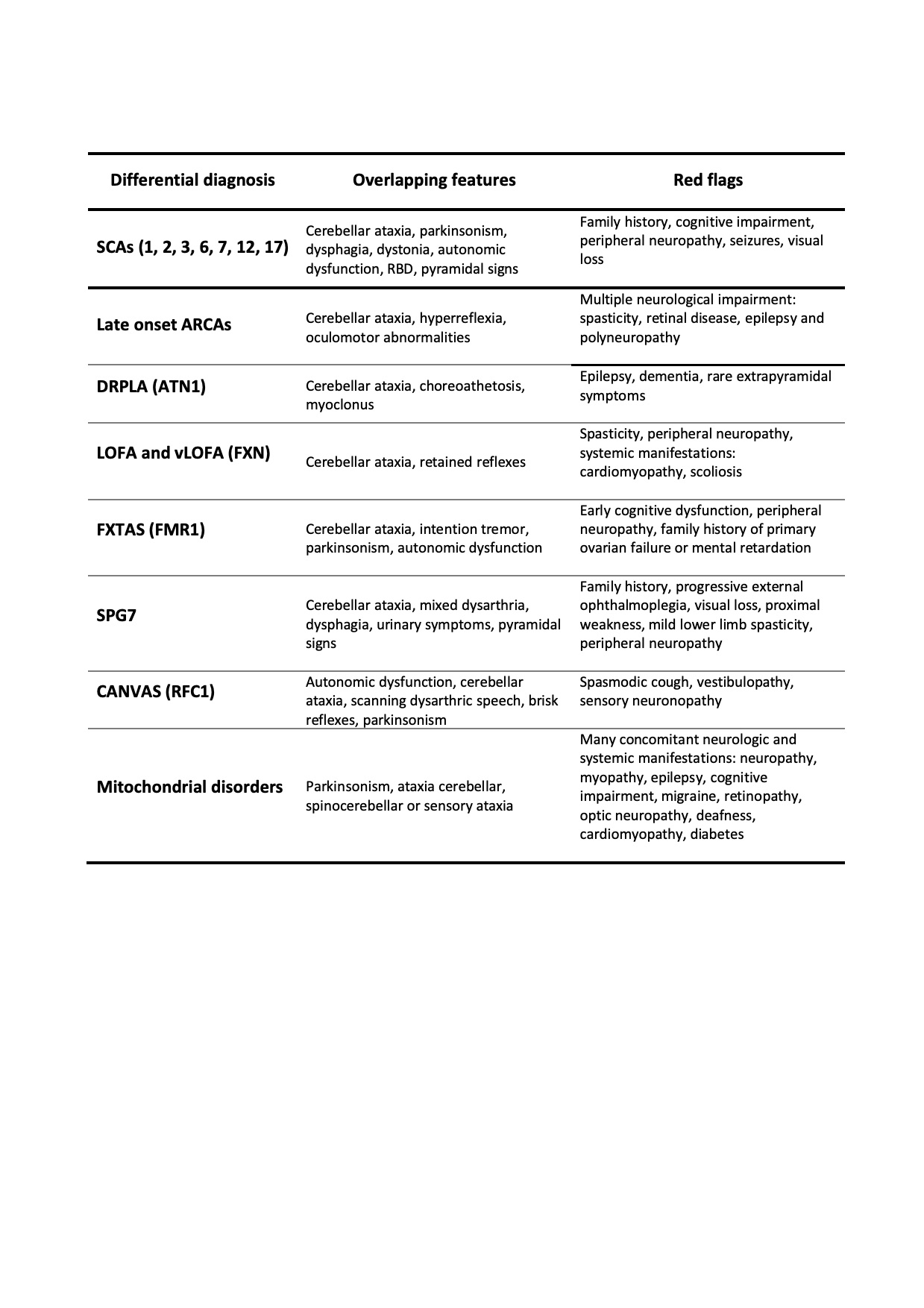Category: Ataxia
Objective: Spinocerebellar ataxia autosomal recessive type 10 (SCAR 10) is a very rare cause of slowly progressive cerebellar ataxia caused by mutations of ANO10 gene [1].
Background: Here we present the case of a 51-year-old man who presented to our service complaining about 1 year-history of gait and balance problems. Erectile dysfunction, mild urinary urgency and nocturnal high-pitched breathing sounds were also reported. Previous medical history and family history were unremarkable. The neurological examination revealed an upper and lower limbs dysmetria, ataxic gait, mild dysarthric cerebellar speech, very mild bilateral bradykinesia, horizontal and vertical nystagmus and pyramidal signs, i.e. vivid tendon reflexes in the four limbs with bilateral Hoffman sign. A cerebral MRI showed a considerable cerebellum atrophy and mild brainstem global atrophy [figure 1]; a PET-FDG disclosed a cerebellar hypometabolism [figure 2]. DATSCAN revealed no involvement of dopaminergic pathways. A bladder scan revealed a significant post-void residual (285 ml) however, an increased prostate size was found and an alpha-blocker improved the urinary urgency. A tilt test disclosed a symptomatic (empty head) orthostatic hypotension indicating a cardiovascular sympathetic dysautonomia. A nocturnal polysomnography confirmed the clinical suspicion of stridor with conserved REM sleep atonia.
Method: This clinical picture eventually led to the conclusion for a probable MSA type C [2] . However, over the next 5 years, the urinary urgency remained stable, while OH clinically disappeared and a significant spasticity of the lower limbs appeared. The patient also developed a moderate dysphagia and a mild cognitive impairment. Considering the absence of frank dysautonomia and the slow progression of symptoms the genetic cause was considered: a panel for the most common genetic spinocerebellar ataxia and hereditary spastic paraparesis resulted negative.
Results: Finally, an NGS analysis was performed and a composite heterozygous genetic mutation of the gene ANO10 (p.Ala74pro e p.Phe171ser) was found.
Conclusion: This case highlights how could be challenging differentiating a late-onset ataxia with mild autonomic symptoms and stridor from an MSA-C [table 1]. Questioning a previous diagnosis according to the evolution of the disorder through the years is crucial.
References: [1] Chrysanthou, A., Ververis, A., & Christodoulou, K. (2022). ANO10 Function in Health and Disease. Cerebellum, 0123456789. https://doi.org/10.1007/s12311-022-01395-3
[2] S. Gilman, G.K. Wenning, P.A. Low, D.J. Brooks, C.J. Mathias, J.Q. Trojanowski, N.W. Wood, C. Colosimo, A. Dürr, C.J. Fowler, H. Kaufmann, T. Klockgether, A. Lees, W. Poewe, N. Quinn, T. Revesz, D. Robertson, P. Sandroni, K. Seppi, M. Vidailhet, Second consensus statement on the diagnosis of multiple system atrophy, Neurology 71(9) (2008) 670-6.
To cite this abstract in AMA style:
S. Gallo, M. Fabbri, F. Ory-Magne, O. Rascol. Spinocerebellar Ataxia Autosomal Recessive Type 10 Misdiagnosed as a Multiple System Atrophy Type C: a Case Report. [abstract]. Mov Disord. 2023; 38 (suppl 1). https://www.mdsabstracts.org/abstract/spinocerebellar-ataxia-autosomal-recessive-type-10-misdiagnosed-as-a-multiple-system-atrophy-type-c-a-case-report/. Accessed April 1, 2025.« Back to 2023 International Congress
MDS Abstracts - https://www.mdsabstracts.org/abstract/spinocerebellar-ataxia-autosomal-recessive-type-10-misdiagnosed-as-a-multiple-system-atrophy-type-c-a-case-report/



